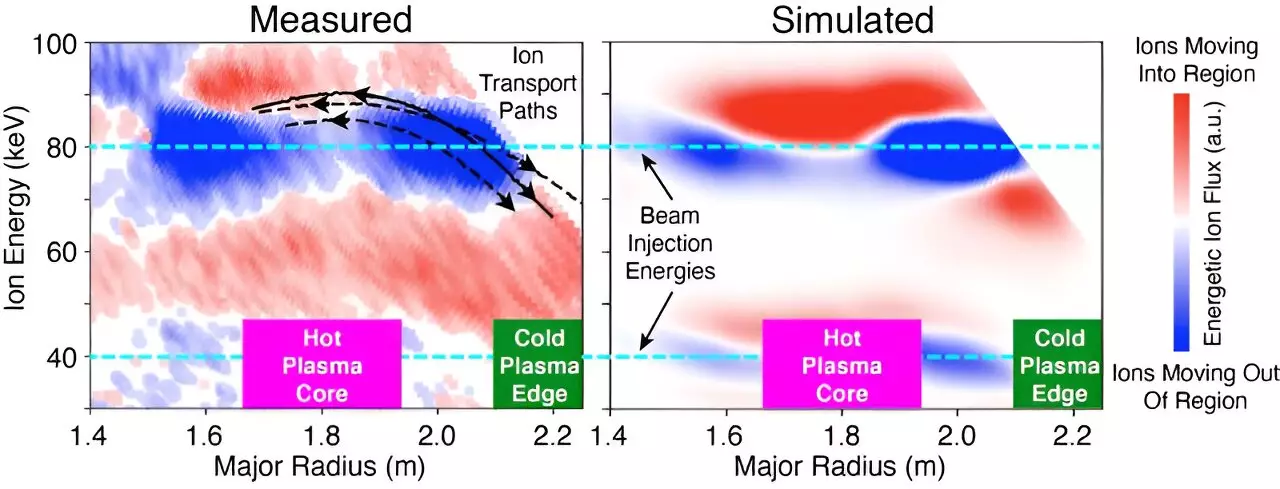The confinement of fusion-produced energetic ions is crucial for generating energy in a burning plasma. However, it is challenging to maintain this confinement due to the presence of a variety of electromagnetic waves in fusion plasmas that can push these ions out. This results in reduced heating from fusion reaction products and ultimately ends the burning plasma state. Recent breakthrough measurements at the DIII-D National Fusion Facility have provided the first direct observations of energetic ions in a tokamak, shedding light on the complex interplay between plasma waves and energetic ions.
Plasma physics and fusion research are moving from experimental facilities towards the design of demonstration power plants. To ensure the success of this transition, accurate simulations and predictive tools are needed to assess the performance of power plant designs. While most current facilities do not produce burning plasmas, researchers have a good understanding of the underlying physics and are developing simulations to replicate observed experimental behavior. New measurements of energetic ion flow in the DIII-D tokamak have accelerated the development of models that account for the dynamic interaction between waves and ions, enabling the application of phase-space engineering for designing new fusion plasma scenarios.
Researchers at the DIII-D National Fusion Facility have utilized the Imaging Neutral Particle Analyzer (INPA), a state-of-the-art diagnostic system, to observe the flow of energetic ions in a tokamak. This groundbreaking system, developed through years of conceptualization, design, and construction, provides the first-ever capability to directly observe this behavior. By measuring the energy of neutral beam-injected energetic ions across time and spatial position from the hot plasma core to the cold plasma edge, the INPA offers a detailed understanding of the dynamics of wave-particle interactions in fusion plasmas.
The observed behavior of energetic ions has been successfully reproduced through simulations, demonstrating the accuracy of first-principles models in describing the underlying physics. Coupled with advanced high-performance computing simulations that model both the spectrum of electromagnetic waves and their interactions with energetic ions, these experiments provide invaluable insights into the interplay between plasma waves and ions in fusion plasmas. This improved understanding not only contributes to the design of fusion power plants but also enhances our knowledge of plasma behavior in outer space.
The enhanced understanding of wave-particle interactions gained through fusion plasma research enables the application of phase-space engineering. This innovative process involves designing new fusion plasma scenarios based on predicted ideal interactions between waves and ions. Similar wave-particle interactions occur in outer space, where electromagnetic ion cyclotron (EMIC) waves can cause electrons to flow through space and energy. The insights gained from fusion plasma research can contribute to simulations of outer space plasma, potentially improving the reliability of future satellite missions by mitigating the adverse effects of electron accelerations.
The recent measurements of energetic ion flow in the DIII-D tokamak, combined with advanced computer simulations, have significantly enhanced our understanding of the complex interplay between waves and ions in fusion plasmas. These findings have important implications for the design of fusion power plants and the study of plasma behavior in outer space. With the continued development of simulation models and diagnostic tools like the INPA, researchers are poised to make further breakthroughs in the field of fusion energy and its applications.


Leave a Reply